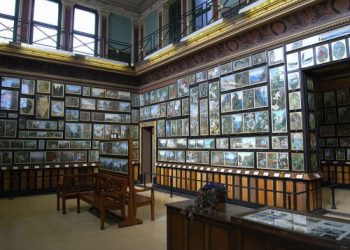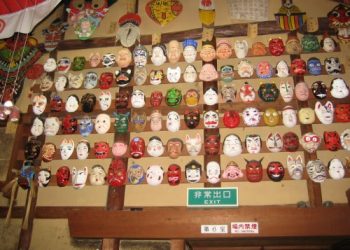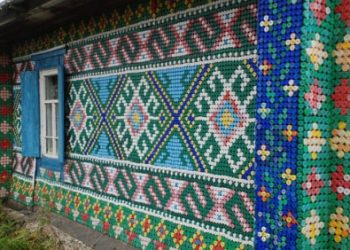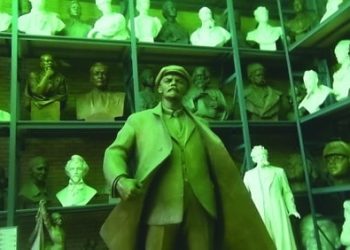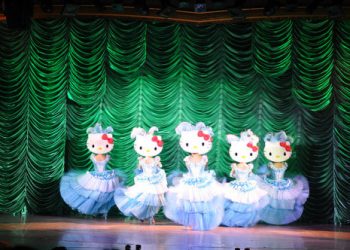As promised, I begin this round of guest posts with an acquaintance of mine, Chicago artist and writer Dmitry Samarov (check out his artwork, his book, his other writings, even his twitter). Thanks to everyone who has submitted a piece or has promised to send one. Look for yours in the next week or two. Anyway, let’s get started…
Driving back to Chicago from a stupor-inducing visit to the House on the Rock, my girlfriend Shay and I saw a glittering house by the side of the highway with a yard full of crude sculptures. After five hours in an overwhelming immersive art environment what could another half hour of cultural appreciation hurt? I turned around and we made our way up to the rutted dirt parking area.
Beyond a wooden gate an out-building was in the process of being covered by a mosaic made up of discarded toys, soda bottle shards, and other everyday detritus. A sign-up sheet on the wall listed hours when volunteers could come and help edge the project toward completion, one trinket at a time.
In the middle of the lawn was a concrete Snow White and five of her seven dwarves in various states of repair. The crudely modelled figures had a certain creepy charm. Like much outsider art the attraction was in the singlemindedness of execution rather than subtlety or grace.
The sculptures, as well as the mosaic-ed house that anchored them, were the work of an Austrian immigrant named Nick Engelbert. He bought this property outside Hollandale, Wisconsin in 1913 and made his first concrete sculpture in the 1930s. He called his home Grandview. By the 50s the whole yard was filled with animals and historic and imagined figures. In 1960, after his wife’s death, he sold it and moved to Baltimore to live with his daughter.
In his absence the grounds fell into disrepair but today it’s run by the Pecatonica Educational Charitable Foundation. They’ve restored many of the sculptures and have turned the house into a museum. They have craft workshops and other events to involve the surrounding community and tourists in helping Englebert’s work live on.
On the day we visited there was an old-timey band setting up inside. Outside a tour was briefly disrupted by the appearance of a garden snake. For a few minutes nobody was looking at Englebert’s creations and were worriedly scanning the lawn. But once located, the snake refused to budge or do anything else worth recording for posterity on our cell phones, so we went back to the sculptures.
Wisconsin is dotted with art environments; each a testament to an individual’s quest to make their surroundings conform to their inner vision. It was a pleasure to stumble upon one man’s odd and particular version of heaven.


